In this article, Krati Bhardwaj of New Law College, Bharti Vidyapeeth, discusses Law of Torts in India.
Introduction
One moment you are walking on the road and the other you slip into the pit left open by the Municipal Corporation. Without having a glance around, you stand up quickly to cover up the embarrassment you have faced. But what can you do? This happens every now and then especially in a country like India. Is there anyone who could be blamed for this? I have sustained injuries so I should be more careful from the next time. Isn’t it? No, there was a responsibility of Municipality in this situation. They were negligent in fulfilling their duty. This is what law of torts talks about and much more.
What is Tort?
- The word tort has been derived from a Latin word “tortum” which means twisted or crooked. According to Salmond, “Tort is a civil wrong for which the remedy is a common law action for unliquidated damages, and which is not exclusively the breach of contract, or, the breach of trust, or, other merely equitable obligation.”
- It is different from breach of contract and trust. Tort is when the act of one party causes some harm to the other party due to negligence, carelessness on the part of another party. The one who sues is known as ‘plaintiff’ and the one who is sued is known as ‘defendant’.
- The person who causes such harm shall be made liable to pay compensation to the injured party (plaintiff), this compensation can be in the form of money. This money received in the form of compensation is known as ‘damages’. In order to claim damages, there must be some breach of duty towards plaintiff which resulted in such injury.
- Even if the harm which is caused was not intentional but due to carelessness or negligence, then also the other party can be sued. Tort allows people to hold the other person accountable for the injuries suffered by them.
Essentials of Law of Tort
- Act/omission: To constitute a tort there must be an act, which can either be negative or positive. There must be some breach of duty to constitute such wrongful act or omission. It means there was a duty to do or not to do a certain action, or to behave in a particular manner which a reasonable man is expected to act under certain circumstances. If a corporation maintains a children park which has a poisonous plant but fails to put proper fencing. If one of the children eats a fruit from that tree and dies, then the corporation can be held liable for such an omission. A person cannot be held liable for social or moral wrong. For example, if somebody fails to help a starving man then he cannot be held liable because it is a moral wrong unless some legal duty can be proved.
- Legal Damage: In order to constitute tort, breach of legal duty must be there. The legal right vested with the plaintiff should have been breached i.e certain act or omission have resulted in the breach of legal duty. The action can be instituted if there is a breach of legal right. For the injury sustained by the plaintiff, damages could be claimed by him. Legal damage could be understood more clearly with the help of following maxims:
1. Injuria sine damnum: “Injuria” means unauthorised interference with the right of the plaintiff. “Damnum” means harm or loss suffered in terms of comfort, money, health etc. When there is violation legal right without any harm to the plaintiff, the plaintiff can approach the court.
In Ashby v. White, the plaintiff was detained by the defendant, a returning officer. The plaintiff was a qualified voter at the parliamentary election but due to detention, his voting right was violated. The plaintiff sued the defendant for violation of his legal right. Since there is a right there is also a remedy available for it.
Similarly, in Bhim Singh v. State of J&K, plaintiff was an MLA of J&K who was detained wrongfully by the police officer while he was going to attend Assembly session. The fundamental right of personal liberty was violated and moreover, he was not presented before the magistrate within the requisite period. Here the wrongful and malicious act of the defendant was actionable so court awarded exemplary damages of Rs 50,000 to Bhim Singh.
2. Damnum sine injuria: According to this maxim, there is some injury caused to the plaintiff without any unauthorised interference to plaintiff’s legal right. A person cannot claim damages in law even if the injury is caused due to the deliberate act of the defendant, as long as the other party is exercising his legal right. For example, a defendant set up a school exactly in front of the school of the plaintiff. The plaintiff suffered loss because of the rival school as he has to lower the fees and many students took admission in defendant’s school. There is no remedy available for the loss suffered by him. The defendant has not done anything in excess of his legal right.
Development of law of torts in India
To deal with the malicious behavior of the people tort existed in Hindu and Muslim law but it can be said that tort was formally introduced by the Crown in India. It is based on the principles of equity, justice, and good conscience. The law of torts is based on the principles of ‘common law’ which is mainly the English law of torts. The application of the law of tort is an applied selectively in Indian courts keeping in mind if it suits the circumstances of Indian society.
Justice Bhagwati in M.C Mehta v. Union of India observed that:
“We have to evolve new principles and lay down new norms which will adequately deal with new problems which arise in a highly industrialized economy. We cannot allow our judicial thinking to be constructed by reference to the law as it prevails in England or for the matter of that in any foreign country. We are certainly prepared to receive light from whatever source it comes but we have to build our own jurisprudence.”
Is it Law of tort or Law of Torts?
- Winfield theory of tort: According to the law of “tort” theory, all the unjustifiable harm for which there is no excuse will be treated as a tort. The Chief supporter of this theory in Winfield, according to him if any injury is done to the neighbor he can sue the other person no matter if the wrong happened has a particular name or not. The person held liable should prove lawful justification. Indian judiciary supported Winfield’s theory in the case of M.C Mehta v. Union of India.
- Salmond theory of torts: Salmond was the supporter of the law of “torts”, according to him the liability under this law arises only when the wrong is covered under one or other nominate torts. This theory is also known as Pigeon hole theory. In order to succeed under this theory, the plaintiff should place the wrong under the already present torts.
Each theory is correct from its point of view it depends on the question of approach or looking at things from a certain angle.
How law of torts is different from crime
| S.NO | Tort | Crime |
| 1. | The person who commits a tort is known as ‘tortfeasor’. | The person who commits a crime is known as ‘offender’. |
| 2. | Proceedings take place in Civil Court. | Proceedings take place in Criminal Court. |
| 3. | The remedy in tort is unliquidated damages. | The remedy is to punish the offender. |
| 4. | It is not codified as it depends on judge-made laws. | Criminal law is codified as the punishments are defined. |
| 5. | Private rights of the individuals are violated. | Public rights and duties are violated which affects the whole community. |
Types of torts
Intentional tort
In order to commit an intentional tort, some action must be done with a purpose i.e there must be an intention to commit an act. For the welfare of the society, it is generally assumed that no one should attack the other person intentionally. For example, if you hit a person with an iron rod on the head, there was an intention to cause injury to that person in a particular way.
Intentional tort includes the following
-
Battery:
When some force is applied physically to the body of another person in an offensive manner which causes some harm is called battery. Battery constitutes the offensive touching which is not consented by the other party. Even if the person did not intend to injure the other person but if he has the knowledge that his act could harm someone in any way then also the battery is constituted. The personal liberty of the person is interfered in any way with the intention to cause harm. Common examples of the battery include hitting a person with a stick, punching someone on the face.
Elements of battery include:
- There must be an intent to use some physical force.
- There must be actual physical contact with the body of another person.
- There must be some harm.
2. Assault:
When the act of one person creates an apprehension in the mind of another person that such act is likely or intended to cause such harm. It could range from pointing a gun at a person to verbally threatening a person. Apprehension should not be confused with fear. Apprehension is when a person is aware that the injury is imminent. There is an assault if a person threatens to shoot another while pointing a gun another him, even if the victim later discovers that the gun was not loaded. Unlike the battery, there is no physical contact in an assault. For example, if a person makes a flinch but does not actually punch the person then there is an assault.
Essential elements of assault are:
- There must be an apprehension of harm.
- There must be an intention to use force.
Difference between Assault and Battery
| S.No | Assault | Battery |
| 1. | The purpose here is to threaten. | The purpose is to cause harm. |
| 2. | There is no physical contact, only such apprehension. | Physical contact is mandatory. |
| 3. | Pointing a stick towards a person is assault. | Hitting with the stick is battery as there is a physical contact between the two people. |
3. False imprisonment:
It is the unlawful confinement of the person without his will. It is not necessary that person should be put behind the bars, a mere impossibility of escape against the will of the person from a certain area is enough to constitute a tort of false imprisonment. It includes the use of physical force(actual expression of force is not always necessary), a physical barrier like a locked room, invalid use of legal authority. False arrest is the part of false imprisonment which includes detaining of the person by the police without lawful authority.
Essential elements are :
- There must be an intention
- Period of confinement
- Knowledge of the plaintiff
- Place of confinement
Malicious prosecution falls within the category of false imprisonment. It not only includes malicious proceedings and arrests instituted falsely but also includes malicious search, malicious bankruptcy and liquidation proceedings. In order to prove malicious prosecution, these essentials should be kept in mind:
- There must be malice towards the plaintiff
- The absence of reasonable cause
- Prosecution by the defendant
- Damage was suffered by the plaintiff as a result of the prosecution
4. Trespass:
It is the intentional, unreasonable invasion of the property, land, person or goods. The unreasonable interference can cause harassment or harm to the other person, no matter how slight it is. The legal right of the owner of the property is infringed because he is deprived of his right to enjoy the benefit of the property by the misappropriation or exploitation of his right. Types of trespass are:
- Trespass to person: When a wrong is done to the individual and in some way personal liberty and interference is caused to the body of the person. It is an invasion of person’s right to freedom. The dignity of the person is protected by it, even if no physical injury is caused. For example, taking the fingerprints of a person forcefully. It consists of following torts: assault, battery, and false imprisonment.
- Trespass to land: Unlawful interference to the land of some other person is the trespass to land. Land here includes not only the building and the surface but also the subsoil and airspace. Even if there is no damage done to the property but if the person enter the land of another person without his permission, then it is trespass. If a delivery boy was supposed to deliver the goods at the front door of the house but seeing the house open he enters one of the rooms to which he was not entitled, then he has done trespass to land. A person will not be liable for trespass if he enters the premises or land to save the life of another person. For example, if a person sees in a baby trapped in a fire in a house, then if he enters the house to save him he will not be guilty of trespass. The owner of the property owes some duty to the guest. If any guest is injured on the property in possession of the owner then the owner can be held liable.
- Trespass to chattels: Also referred as trespass to personal property or goods, it is the interference or unauthorised use of person’s lawful possession of property without his permission. Chattel can be referred to personal property whether moving or not but it does not apply to land or real property. For example, two friends were studying together. After they were done with studies one of the friends took the book of another assuming it to his book. There is trespass to chattel as there was an intention to take the book. So the mistake of ownership cannot be used as a defense in this case. The person can recover actual damages which are measured by the diminished value of the chattel that resulted from the defendant’s actions.
5. Defamation:
It is an injury or harm caused to the reputation, goodwill or character of the person. There are two types of defamation in the form of Libel and Slander. Libel is the publication of a false statement which is likely to cause harm to the reputation of another person. Publication means it should come into the notice of the third party. It must be in printed form for example writings, pictures, cartoons, statues etc. When the false spoken statement results in lowering the reputation of another person then it is slander. In, Harash Mendiratta v. Maharaj Singh, it was held that only the person who has been defamed can maintain an action and not his friends, family or relatives. Sometimes the statement may appear to be innocent but there might be some hidden meaning to it. In order to file a suit for defamation, the plaintiff must prove such hidden meaning. Defamation in the law of tort deals mainly with libel. To prove that the statement was libelous, it must be
- False
- Written
- Defamatory
- Published
If the defamation is proved when a suit is instituted, damages can be given to the plaintiff as compensation and in some cases, injunction can also be granted to restrain certain publication because of which a person has an apprehension of being defamed.
Some of the defenses to defamation are:
- A substantially true report was published.
- When the case has been decided by the court it is not defamatory to express any opinion on the merit of the case in good faith.
- Any truth which is published for the public interest.
Tort-based on Negligence
Negligence is the absence of reasonable care which is imposed on all persons so as not to place the other person at foreseeable risk of harm through his conduct. It is the failure to act is a particular way by taking into account the apprehended injury that could be sustained due to carelessness to one party.
Elements of negligence are:
- Duty: There must be some duty or an obligation which one person owes to another. If the defendant fails to fulfill the duty which he owes to the plaintiff in the eyes of law then he can be held liable. So at first, it should be assessed whether the defendant owes any duty of care to the plaintiff or not. Sometimes the relationship between the plaintiff and defendant creates a legal duty or obligation to act in a certain manner. For instance, the doctor owes a duty of care to the plaintiff i.e to treat the patient in an appropriate manner. If the doctor while treating the patient left a ring in his abdomen, then he can be said to be negligent in giving appropriate medical treatment. The doctor owed a duty of care towards his patient which he failed to do so.
- Breach: once it has been assessed that defendant owes a duty of care to the plaintiff, it should be further established that there was some breach of duty i.e one person failed to exercise a take. “Amount of care” means the care which a reasonable person would have taken in those circumstances. Whether there was any breach of duty is both a subjective and objective test. The defendant can be said to be negligent if he knew that his action would affect the other person if he does not act in a particular way, for eg. if the owner of the dog knows that his dog is of ferocious nature then he should put some warning on the gate like “Beware of dog” or “Enter at your own risk”. If he fails to do so then he can be held negligent in taking such care.
- Causation (cause in fact): This element aims at establishing that there should be some negligence on the part of the defendant which caused such injury or harm to the plaintiff. The plaintiff should prove that the loss suffered was caused by the defendant. The (but for) rule is used in proving the causation i.e whether the injury suffered would have happened but for the action of the target of your suit.
- Proximate cause: If a person cannot foresee that something bad could happen to another person then how could he be held liable. To make the person liable for alleged action it should be proved that his action was the remote/closest cause for the injuries sustained. If the act is foreseeable then only the person is liable otherwise not, for eg. If a motorcyclist hit the pedestrian on the road due to which he suffered a severe injury on the head. Seeing the sight on the internet, a woman whose house was on the road had a heart failure. The motorcyclist was liable to the pedestrian as he failed to take reasonable care while driving. But he is not liable to the woman who had a heart attack because that was not foreseeable.
- Damages: The last element of negligence is damages. The person who had sustained injury should be compensated for such harm. The test of (reasonable person) is important to decide if the plaintiff is entitled to compensation or not. The compensation given to the plaintiff should be capable of putting him back in the position in which he was before the incident took place. For eg., if the car driver hit the motorcyclist due to which he sustained injuries and had to miss work, the compensation that the car driver could be made to pay should bear his medical expenses, lost earnings and the pain and suffering endured by him.
Defenses:
i) Volenti non fit injuria: If a person acts voluntarily and is aware of the risk associated, he cannot recover damages if he suffers harm. This is the voluntary acceptance of risk. The person should be free to make a choice when the employer forces an employee to take the risk of which he is aware but is not willing to undertake. Here, the defense cannot be used by the employer if an injury is sustained by the employee because the employer had forced the employee to undertake the risk against his will.
Essential of Volenti non fit injuria:
- There was knowledge of risk by the plaintiff
- He voluntarily undertook such risk
ii) Contributory negligence: When the damage which the plaintiff has suffered was partly due to his fault and partly due to the fault of the defendant, this constitutes contributory negligence. In order to prove contributory negligence, it must be proved that the plaintiff failed to take reasonable care for his safety. In a collision between two cars, the defendant was driving negligently at high speed. It was discovered that the plaintiff was not wearing seat belt due to which he sustained the higher amount of injuries than if he had been wearing a seatbelt. The plaintiff failed to take reasonable care which was expected on his part. So he is liable for contributory negligence.
iii) Ex turpi causa: it means no defense or legal remedy can be initiated if the cause of action which arose was due to the illegal conduct of the plaintiff i.e no action can be found on a bad cause.
For example, Mr. Anil took a lift in a car which he knows was stolen by the other person. Later, the car met with an accident, Mr. Anil cannot initiate an action against the other party under this principle.
Strict liability under law of tort
It is the type of tort in which the defendant is held responsible for the injuries sustained. The plaintiff need not prove whether the tort occurred or not, he can sue the defendant for defective action. Under certain circumstances, if any wrong happens then the perpetrator can be held responsible for such an act when the activities are known to be fundamentally dangerous. This rule is applicable in India as much as in England.
For example, ‘X’ stores flammable propane tank in a factory near to ‘Y’ house. As the consequence of mischief of rat the tank was set on fire tank because of which Y’s property was damaged. Although there was no fault of ‘X’, still ‘X’ is liable as ‘Y’ suffered because of him.
In Ryland v. Fletcher, the defendants employed independent contractors to construct a reservoir on their land for providing water to his mill. The contractor failed to seal the unused mines which he found while digging. When the water was filled in the reservoir, it burst through the shafts wand and water flooded in plaintiff’s mines. Although the defendant has no idea about the shaft and was not negligent. The incident took place because of the fault of the contractor still the defendant was held liable.
Following torts must be present to constitute the tort of strict liability:
- Some dangerous thing must have been brought by a person on his land.
- The thing kept on land must have escaped.
- Non-natural use of land.
Exception to this rule:
i) Plaintiff’s own fault: If some intrusion by the plaintiff in defendant’s property causes some harm to him then the defendant cannot be held liable. In Ponting v Noakes, the plaintiff’s horse ate some poisonous leaves from the defendant’s tree after which he died. The defendant was not held liable as it was the wrongful intrusion by plaintiff’s horse. No damage would have been done if the horse would not have entered defendant’s property.
ii) Act of god: Circumstances which are not under the control of human beings or which are not foreseeable fall under this rule. The defendant cannot be held liable if some natural event leads to the escape of dangerous thing.
iii) Consent of the plaintiff: If the plaintiff has consented to the accumulation of some dangerous thing on plaintiff’s land and the source of danger was for the common benefit of both the plaintiff and defendant then defendant cannot be held liable for such escape.
iv) Act of third party: If the act of third person causes some harm to the plaintiff over which the defendant has no control or the person is not defendant’s servant then he cannot be held liable under this rule. If the act of third party is foreseeable then due care must be taken by the defendant.
v) Statutory Authority: Act done under the authority of statue is a defense provided there is no negligence.
Another liability which arose after the case of M.C Mehta v. Union of India was that of Absolute liability. According to this liability, if a person is engaged in some dangerous activity which is the source of his commercial gain then he owes some duty of care to the society if the escape of dangerous thing could cause catastrophic damage. He cannot take the exception of act of god or third party.
In M.C Mehta v. Union of India, oleum gas leaked from one of the unit of Shriram Foods fertilizer Industry in the city Delhi. Due to the leakage of this gas, many people were affected. If the rule of strict liability would have been applied in this situation then it would have been easy for the defendant to escape by saying that the damage was due the act of stranger. The Supreme Court was of the opinion that they do not have to follow the 19th century rule of English Law and could evolve a new rule suitable to the economic and social conditions existing in India. The court in this case by applying the rule of absolute liability held the defendant liable. As per the directions of the court, the organisations who filed the case could claim the compensation on behalf of the victims
Other Tort
Nuisance: It is derived from a French word “nuire” which means to annoy or harm. The person in possession of the property is entitled to free use and enjoyment of his land and property without any unauthorised interference. If any interference is caused then the tort of nuisance has occurred. It is different from trespass which is the interference of plaintiff’s possession through some tangible object or material whereas nuisance is the interference with the right accessory to possession.
Elements of nuisance:
- There must be some wrongful act committed by the defendant.
- The wrongful act must result in some injury to the legal right of the plaintiff.
Kinds of Nuisance
- Public Nuisance: When the act of the person affects a large number of people then it is termed as public nuisance. The aim of this tort is to avoid unwarranted disturbance and ensure the right to safety and right to enjoy the possession peacefully. For instance, shooting firecrackers in the middle of the road. The claimant should prove that they have suffered “special damage” over and above the effects on the other affected people in the “class”.
- Private Nuisance: It is the interference with the enjoyment or use of land or some right connected to it. The interference can be caused due to things like smell, noise or any kind of vibration etc. For example, damage caused to the health of person due to noxious fumes or the breaking of the window by a cricket ball. In order to initiate the tort of private nuisance, the person should prove that there was some interference, then the interference caused was unreasonable. Nuisance can be caused either to property or some physical discomfort.
Defenses
- If a private nuisance continues for 20 years then it is a special defense and the right to continue a private nuisance may be acquired as an easement by prescription. This type of nuisance can be enjoyed for a period of 20 years and after that, it will be legalised.
- If a statute has allowed or authorised to do a particular act, all remedies, whether by way of indictment or action, are taken away, provided that every reasonable precaution consistent with the exercise of the statutory power has been taken away.
Remedies
- Damages: To restore the plaintiff in the position he was if the tort would not have been committed, damages are awarded to the claimant. The injury caused includes not only physical injury but also emotional, economic or reputational injury and many other. Damages payable to the plaintiff are made in terms of money. Damages depend upon the cause, fact and the circumstances of the case. Damages can be awarded more than that claimed by the defendant.
- Injunction: it is granted to refrain the party from further continuing an act. Sometimes damages are not enough to compensate the party, the act which is causing such harm needs to be permanently to be stopped. It is granted at the discretion of the court.
References
- http://www.legalserviceindia.com/article/l129-Torts-In-India.html
- https://legal-dictionary.thefreedictionary.com/trespass
- https://injury.findlaw.com/torts-and-personal-injuries/trespass-to-chattels.html
- https://www.slideshare.net/shantanu_leo/defamation-law-in-india
- https://www.slideshare.net/airlawacademy/law-of-torts-its-evolution-in-india-80392234
- https://taxguru.in/corporate-law/types-nuisance-remedies.html
- R K Bangia
 Serato DJ Crack 2025Serato DJ PRO Crack
Serato DJ Crack 2025Serato DJ PRO Crack


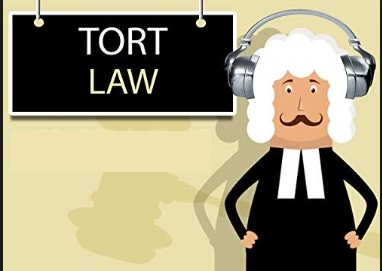

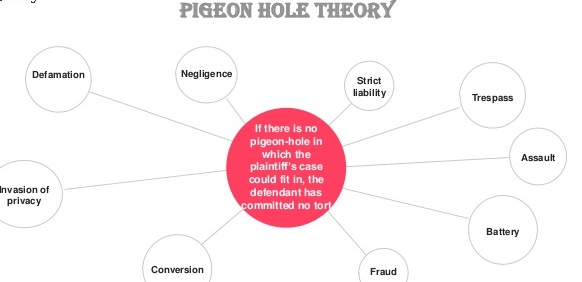

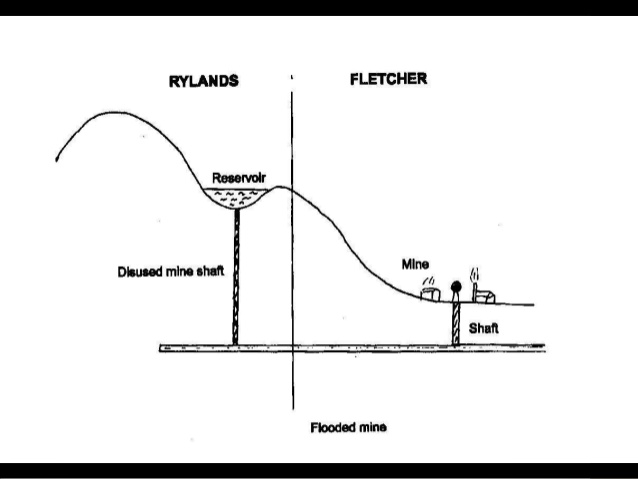
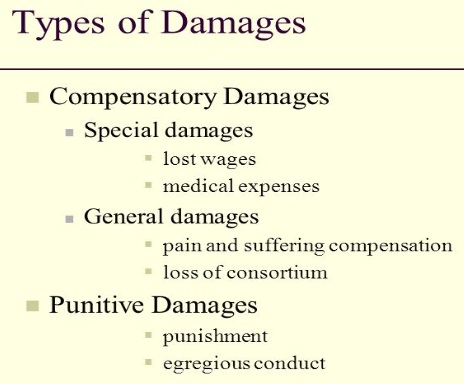
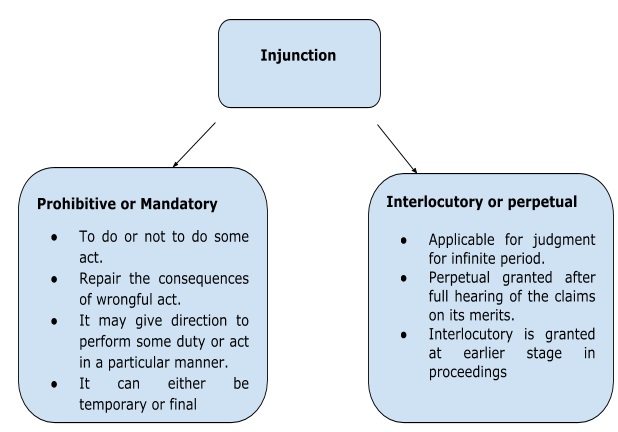
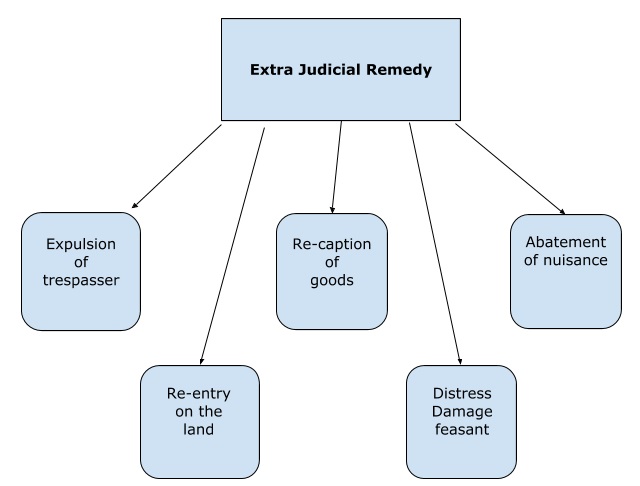





 Allow notifications
Allow notifications




very informative, and comprehensive article. The author is appreciated.
Had if the salient features of consumer protection act also included,it would be much better.